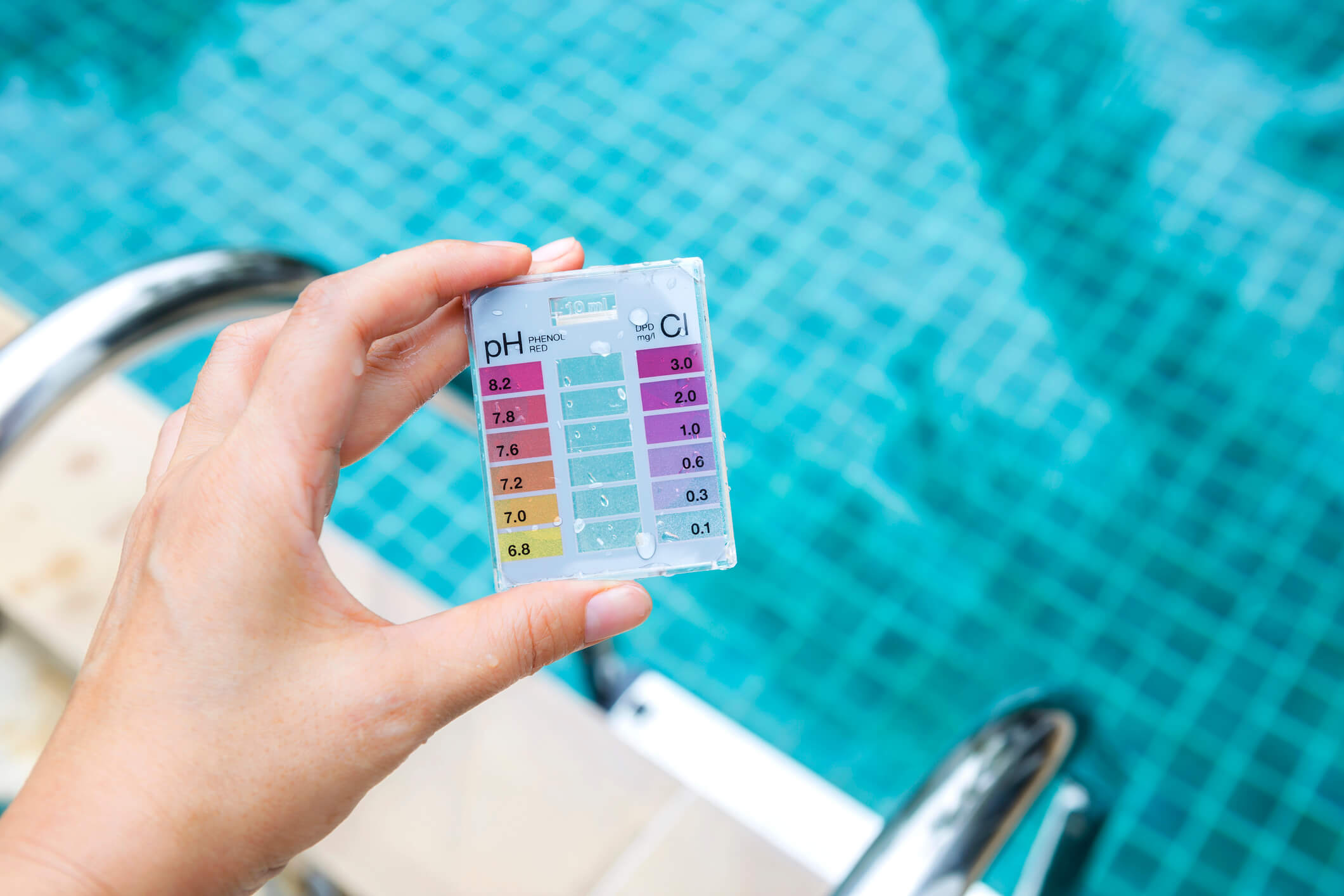
A sparkling pool starts with invisible science.
Behind the cleanest water and longest-lasting equipment is a delicate balance of chemicals working together. But no worries – you don’t have to be a chemist to get it right.
Here are a few basic principles to stay on top of it.
Why balance matters
When your pool is too acidic (low pH), it can sting your eyes and start corroding your equipment. On the other hand, water that’s too alkaline (high pH) can feel unpleasant, cause calcium build-up and interfere with your sanitiser.
How to test your water
Regular water testing is a must. Ideally, you should test your pool weekly with test strips or digital kits, and take a water sample to a specialised pool shop once a month for professional analysis.
We mention specialised pool shops for a reason. While hardware stores may offer pool testing, they often don’t have the equipment and expertise to give you accurate readings and tailored advice.
Sure, you might save a few bucks, but incorrect test results could cost you more in the long run. Think damaged plaster finish, seals and equipment.
What to measure
Here’s a handy table about the key chemical factors you should measure:
| What it is about | Ideal range | |
| pH Level |
pH measures how acidic or alkaline your water is. Low pH can cause eye irritation and corrosion, while high pH can lead to scaling and cloudy water. Adjust using dry acid (to lower) or soda ash (to raise).
|
7.2-7.6 |
| Total Alkalinity (TA) |
This refers to the amount of carbonates and hydroxides in your water. TA helps buffer pH, keeping it stable. If it’s too low, pH fluctuates; too high and the water can cloud. Raise with sodium bicarbonate (baking soda), lower with pool acid |
80-120 ppm |
| Calcium Hardness (CH) |
This is the amount of calcium in your water. Too much makes the water cloud and leads to calcification, too little can lead to metal corrosion, staining and even make your water slimy. Use calcium chloride to raise; lowering requires partial draining.
|
200-300 ppm (concrete pools) 100-250 ppm (vinyl/fibreglass) |
| Free Chlorine |
This sanitiser keeps your water safe. Too low and germs, algae and bacteria grow. Too high and it could cause skin irritation. Raise with chlorine tables or liquid chlorine; lower by reducing chlorine input.
|
2-3 ppm |
| Cyanuric Acid (CYA) |
CYA protects chlorine from UV rays. Too low and chlorine disappears quickly, too high and it becomes ineffective. Reducing requires water dilution.
|
30-50 ppm |
Quick tips for balancing pool chemicals
- Store essentials like pool acid, baking soda and chlorine tablets.
- Follow instructions on chemical packaging.
- Test weekly with a home kit and monthly at the pool shop.
- Always retest after rain, high swimmer load or equipment changes.
- Keep a log of your readings.
Time to upgrade your pool cleaning game?
Check out our range of robot cleaners, ozone systems, pool filters, chemical dosing pumps, salt chlorinators and chlorine feeders.
Found something you need? Call us on 0800 280 840 or contact us online for expert advice.